A Multi-Source Intelligent Fusion Assessment Method for Dynamic Construction Risk of Subway Deep Foundation Pit: A Case Study
Abstract
1. Introduction
2. Multi-Indicator Fusion Dynamic Assessment Method
2.1. Prediction of the Horizontal Displacement of the Pile
2.1.1. Theory of the LSTM Model
2.1.2. Theory of the PSO-SVM Model
2.1.3. Rolling Prediction Algorithm
- (1)
- For the first round of prediction, the time series is used as the training sample to predict the surrounding rock displacement for the next days.
- (2)
- For the second round of prediction, the time series is used as the training sample to predict the surrounding rock displacement for the next days.
- (3)
- For the second round of prediction, the time series is used as the training sample to predict the surrounding rock displacement for the next days.
2.2. Basic Probability Distribution of the CM
2.3. Improved D-S Evidence Theory Information Fusion
3. A Case Study
3.1. Project Profile
3.2. Prediction of the Horizontal Displacement of the Pile
| Monitoring Time/Day | Measured Value/mm | GS-SVM | Relative Error % | PSO-SVM | Relative Error % | LSTM | Relative Error % |
|---|---|---|---|---|---|---|---|
| 12 | 43.286 | 43.648 | 0.836 | 43.737 | 1.041 | 43.945 | 1.523 |
| 13 | 43.246 | 43.750 | 1.165 | 44.495 | 2.889 | 45.186 | 4.487 |
| 14 | 43.336 | 44.250 | 2.109 | 44.670 | 3.078 | 45.880 | 5.871 |
| 15 | 43.416 | 44.130 | 1.645 | 43.261 | 0.358 | 43.350 | 0.152 |
| 16 | 43.636 | 44.260 | 1.430 | 43.168 | 1.074 | 44.136 | 1.146 |
| 17 | 43.946 | 44.429 | 1.099 | 43.062 | 2.011 | 42.857 | 2.478 |
| 18 | 43.216 | 44.485 | 2.936 | 43.898 | 1.579 | 43.912 | 1.611 |
| 19 | 43.726 | 44.551 | 1.887 | 43.569 | 0.358 | 43.356 | 0.847 |
| 20 | 44.886 | 44.395 | 1.094 | 43.095 | 3.990 | 43.022 | 4.153 |
| 21 | 45.976 | 44.627 | 2.934 | 43.892 | 4.534 | 46.676 | 1.522 |
| 22 | 46.166 | 44.730 | 3.111 | 43.946 | 4.808 | 48.393 | 4.823 |
| 23 | 45.466 | 44.500 | 2.125 | 43.994 | 3.237 | 48.259 | 6.142 |
| 24 | 44.766 | 45.850 | 2.421 | 44.684 | 0.184 | 46.714 | 4.352 |
| 25 | 44.696 | 45.010 | 0.703 | 44.177 | 1.161 | 45.267 | 1.278 |
| 26 | 44.586 | 44.610 | 0.054 | 44.013 | 1.285 | 45.339 | 1.688 |
| 27 | 44.296 | 45.243 | 2.138 | 44.480 | 0.415 | 44.510 | 0.482 |
| 28 | 44.246 | 45.601 | 3.062 | 44.391 | 0.327 | 44.411 | 0.372 |
| 29 | 43.896 | 44.702 | 1.836 | 44.406 | 1.162 | 44.402 | 1.154 |
| 30 | 44.496 | 44.769 | 0.614 | 44.772 | 0.621 | 43.738 | 1.704 |
| 31 | 45.086 | 44.473 | 1.360 | 43.802 | 2.849 | 43.726 | 3.017 |
| 32 | 45.496 | 44.210 | 2.827 | 44.962 | 1.174 | 43.842 | 3.635 |
| 33 | 45.746 | 44.129 | 3.535 | 45.725 | 0.047 | 45.700 | 0.101 |
| 34 | 45.636 | 44.140 | 3.278 | 45.695 | 0.129 | 46.629 | 2.176 |
| 35 | 46.566 | 44.238 | 4.999 | 45.568 | 2.144 | 45.476 | 2.341 |
| mean absolute error | 2.05 | 1.686 | 2.377 |
3.3. Combining Displacement Prediction with Multi-Metric Fusion Dynamic Risk Assessment
3.3.1. Monitoring Indicators
3.3.2. Risk Probability Distribution Level
3.3.3. Multi-Indicator Fusion Analysis
- (1)
- Indicator Forecast
- (2)
- CM + D-S Evidence Theory
3.4. Discussion
3.4.1. Forecasting Results
3.4.2. Evaluation Analysis
4. Results
- (1)
- Artificial intelligence algorithms are introduced into the case to predict envelope deformation. The cloud model and D-S theory are used to fuse multiple indicators. The intelligent multi-indicator fusion assessment model for the dynamic safety of deep foundation pit construction is constructed by coupling and analyzing the deformation prediction results with the risk index information.
- (2)
- The PSO-SVM model outperforms the LSTM model in the case of less on-site construction monitoring data. The comparison with the actual results validates the prediction method. This dynamic assessment of safety integrates information on the characteristics of the monitored items and provides a more in-depth analysis of the risk of envelope deformation, thus improving the accuracy and robustness of the assessment results. This method is also applicable to other metro station cases when monitoring sample data are small.
- (3)
- During the excavation of foundation pits, the risk changes dynamically, which is difficult for a single indicator to reflect the deformation of the site envelope. Therefore, it is significant to build the multi-indicator information model to improve accuracy. This method uses different monitoring indicators as the information source to obtain the risk level prediction. This method of dynamically assessing the extent of deformation can provide early warning signals for decision-makers.
- (4)
- Due to the complexity and uncertainty of the deep foundation pit project, the artificial intelligence model used at present is more applied to the prediction of trend terms and has not been able to consider the situation of unexpected events and contingencies. It also fails to realize the intelligent integration of the dynamic assessment of the whole process of construction, which needs more practice in optimization and improvement.
Author Contributions
Funding
Institutional Review Board Statement
Informed Consent Statement
Data Availability Statement
Conflicts of Interest
References
- Fu, L.; Wang, X.; Zhao, H.; Li, M. Interactions among safety risks in metro deep foundation pit projects: An association rule mining-based modeling framework. Reliab. Eng. Syst. Saf. 2022, 221, 108381. [Google Scholar] [CrossRef]
- Lin, Y.X.; Lai, Z.S.; Ma, J.J.; Huang, L.C.; Lei, M.F. A FDEM approach to study mechanical and fracturing responses of geo-materials with high inclusion contents using a novel reconstruction strategy. Eng. Fract. Mech. 2023, 282, 109171. [Google Scholar] [CrossRef]
- Lin, Y.X.; Yin, Z.; Wang, X.; Huang, L. A systematic 3D simulation method for geomaterials with block inclusions from image recognition to fracturing modelling. Theor. Appl. Fract. Mech. 2021, 117, 103194. [Google Scholar] [CrossRef]
- Yang, W.; Hu, Y.; Hu, C.; Yang, M. An Agent-Based Simulation of Deep Foundation Pit Emergency Evacuation Modeling in the Presence of Collapse Disaster. Symmetry 2018, 10, 581. [Google Scholar] [CrossRef]
- Li, Z.; Zhao, G.-F.; Deng, X.; Zhu, J.; Zhang, Q. Further development of distinct lattice spring model for stability and collapse analysis of deep foundation pit excavation. Comput. Geotech. 2022, 144, 104619. [Google Scholar] [CrossRef]
- Ye, S.; Zhao, Z.; Wang, D. Deformation analysis and safety assessment of existing metro tunnels affected by excavation of a foundation pit. Undergr. Space 2021, 6, 421–431. [Google Scholar] [CrossRef]
- Sun, Y.; Xiao, H. Wall Displacement and Ground-Surface Settlement Caused by Pit-in-Pit Foundation Pit in Soft Clays. KSCE J. Civ. Eng. 2021, 25, 1262–1275. [Google Scholar] [CrossRef]
- Luo, J.; Ren, R.; Guo, K. The deformation monitoring of foundation pit by back propagation neural network and genetic algorithm and its application in geotechnical engineering. PLoS ONE 2020, 15, e0233398. [Google Scholar] [CrossRef]
- Bao, Z.; Wang, C. A multi-agent knowledge integration process for enterprise management innovation from the perspective of neural network. Inf. Process. Manag. 2022, 59, 102873. [Google Scholar] [CrossRef]
- Zhou, Y.; Li, S.; Zhou, C.; Luo, H. Intelligent Approach Based on Random Forest for Safety Risk Prediction of Deep Foundation Pit in Subway Stations. J. Comput. Civ. Eng. 2019, 33, 796. [Google Scholar] [CrossRef]
- Zhang, S.J.; Tan, Y. Foundation pit deformation prediction based on LSTM algorithm. Tunn. Constr. 2022, 42, 113–120. [Google Scholar]
- Song, Z.; Liu, S.; Jiang, M.; Yao, S. Research on the Settlement Prediction Model of Foundation Pit Based on the Improved PSO-SVM Model. Sci. Program. 2022, 2022, 1921378. [Google Scholar] [CrossRef]
- Wang, Q.; Xia, T.; Yang, D. Safety early warning of subway deep foundation pit based on T-S fuzzy neural network. Chin. J. Saf. Sci. 2018, 28, 161–167. (In Chinese) [Google Scholar]
- Zhang, L.; Li, H. Construction Risk Assessment of Deep Foundation Pit Projects Based on the Projection Pursuit Method and Improved Set Pair Analysis. Appl. Sci. 2022, 12, 1922. [Google Scholar] [CrossRef]
- Guo, K.; Zhang, L. Multi-source information fusion for safety risk assessment in underground tunnels. Knowl.-Based Syst. 2021, 227, 107210. [Google Scholar] [CrossRef]
- Zhou, Y.; Li, C.; Ding, L. Combining association rules mining with complex networks to monitor coupled risks. Reliab. Eng. Syst. Saf. 2019, 186, 194–208. [Google Scholar] [CrossRef]
- Pan, Y.; Zhang, L.; Wu, X. Multi-classifier information fusion in risk analysis. Inf. Fusion 2020, 60, 121–136. [Google Scholar] [CrossRef]
- Xia, T.; Cheng, C.; Pang, Q.Z. Deep Foundation Pit Deformation Safety Risk Warning Based on Long and Short Term Memory Network. Earth Sci. 2022, 1–8. Available online: https://kns-cnki-net.webvpn.ecut.edu.cn/kcms/detail/42.1874.P.20211228.1117.016.html (accessed on 26 April 2023).
- Zhao, Y.; Mi, J.-S.; Liu, X.; Sun, X.-Y. Reconstructing images corrupted by noise based on D–S evidence theory. Int. J. Mach. Learn. Cybern. 2017, 8, 611–618. [Google Scholar] [CrossRef]
- Babikir, A.; Mwambi, H. Factor Augmented Artificial Neural Network Model. Neural Process. Lett. 2016, 45, 507–521. [Google Scholar] [CrossRef]
- Pan, Y.; Zhang, L. Roles of Artificial Intelligence in Construction Engineering and Management: A Critical Review and Future Trends. Autom. Constr. 2021, 122, 103517. [Google Scholar] [CrossRef]
- Shen, S.L.; Njock, P.G.A.; Zhou, A.; Lyu, H.M. Dynamic prediction of jet grouted column diameter in soft soil using Bi-LSTM deep learning. Acta Geotech. 2021, 16, 303–315. [Google Scholar] [CrossRef]
- Hu, X.; Liu, T.; Hao, X.; Lin, C. Attention-based Conv-LSTM and Bi-LSTM networks for large-scale traffic speed prediction. J. Supercomput. 2022, 78, 12686–12709. [Google Scholar] [CrossRef]
- Wu, B.; Qiu, W.; Huang, W.; Meng, G.; Nong, Y.; Huang, J. A Multi-Source Information Fusion Evaluation Method for the Tunneling Collapse Disaster Based on the Artificial Intelligence Deformation Prediction. Arab. J. Sci. Eng. 2022, 47, 5053–5071. [Google Scholar] [CrossRef]
- Li, D.; Liu, C.; Gan, W. A new cognitive model: Cloud model. Int. J. Intell. Syst. 2009, 24, 357–375. [Google Scholar] [CrossRef]
- Huang, Y. Advances in Artificial Neural Networks-Methodological Development and Application. Algorithms 2009, 2, 973–1007. [Google Scholar] [CrossRef]
- Zhang, L.; Wu, X.; Zhu, H.; AbouRizk, S.M. Perceiving safety risk of buildings adjacent to tunneling excavation: An information fusion approach. Autom. Constr. 2017, 73, 88–101. [Google Scholar] [CrossRef]
- Liu, J. Research on Dynamic Risk Assessment and Intelligent Early Warning Method of Subway Deep Foundation Pit Construction. Master’s Thesis, Guangxi University, Nanning, China, 2022. [Google Scholar]
- Lin, Y.X.; Wang, X.; Ma, J.; Huang, L. A finite-discrete element based appoach for modelling the hydraulic fracturing of rocks with irregular inclusions. Eng. Fract. Mech. 2022, 261, 108209. [Google Scholar] [CrossRef]
- Wu, B. Research and Practice of Tunnel Construction Safety Risk Management; China Railway Press: Beijing, China, 2010; pp. 60–62. [Google Scholar]
- Ministry of Housing and Urban Rural Development of the People’s Republic of China. 2014. Available online: https://max.book118.com/html/2022/0127/7015010006004064.shtm (accessed on 16 April 2023).
- Huang, L.C.; Ma, J.J.; Lei, M.F.; Liu, L.H.; Lin, Y.X.; Zhang, Z.Y. Soil-water inrush induced shield tunnel lining damage and its stabilization: A case study. Tunn. Undergr. Space Technol. 2020, 97, 103290. [Google Scholar] [CrossRef]
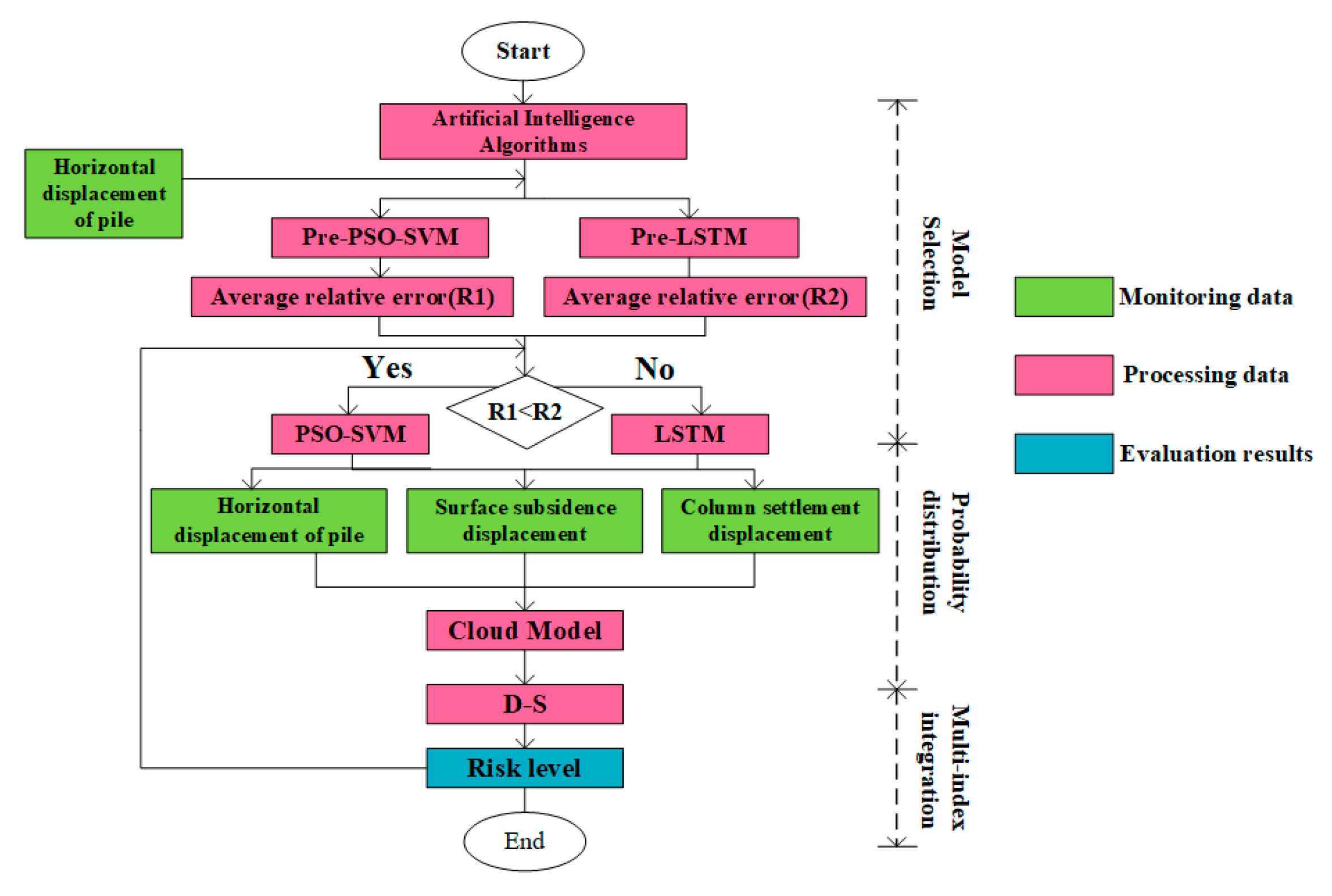
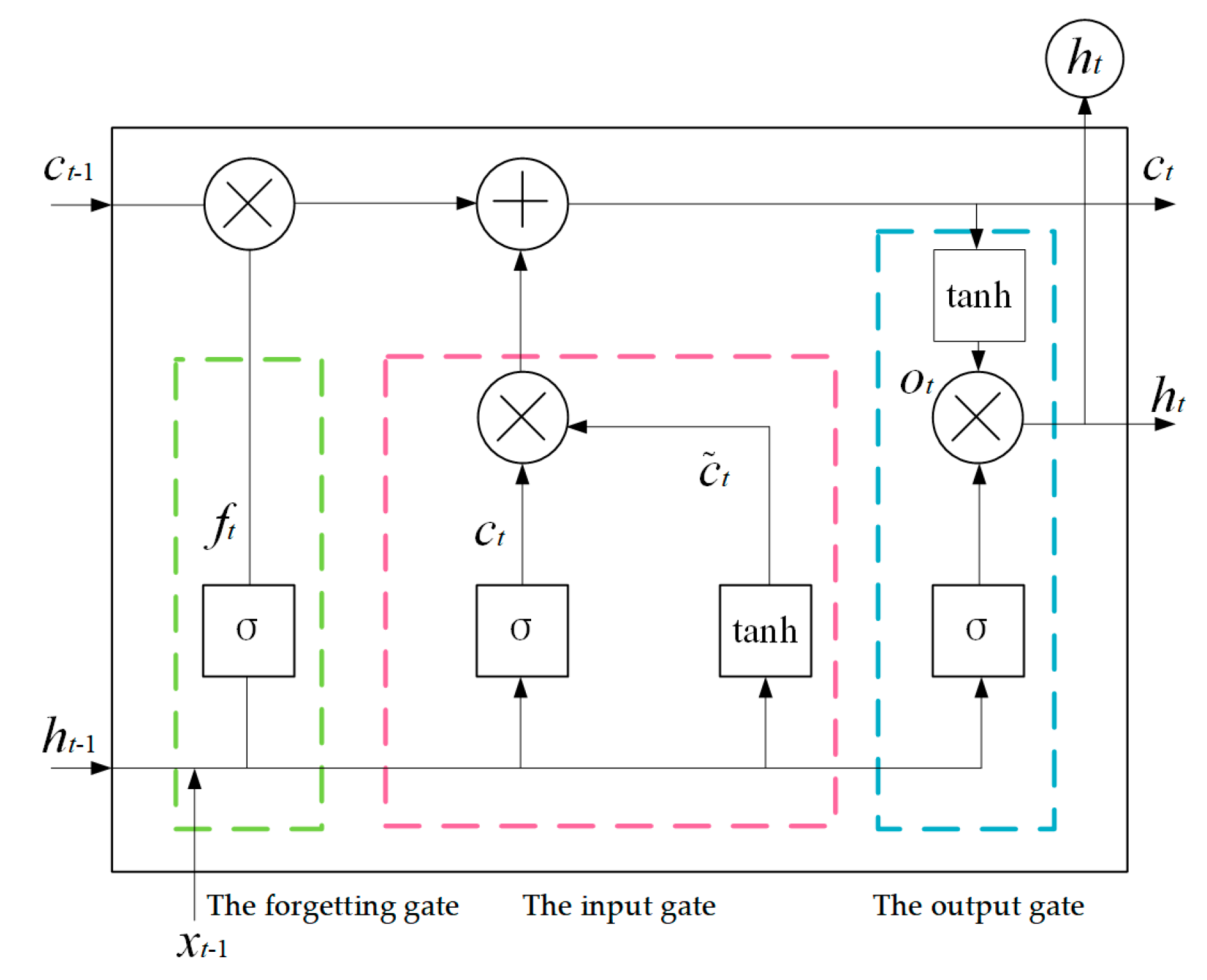
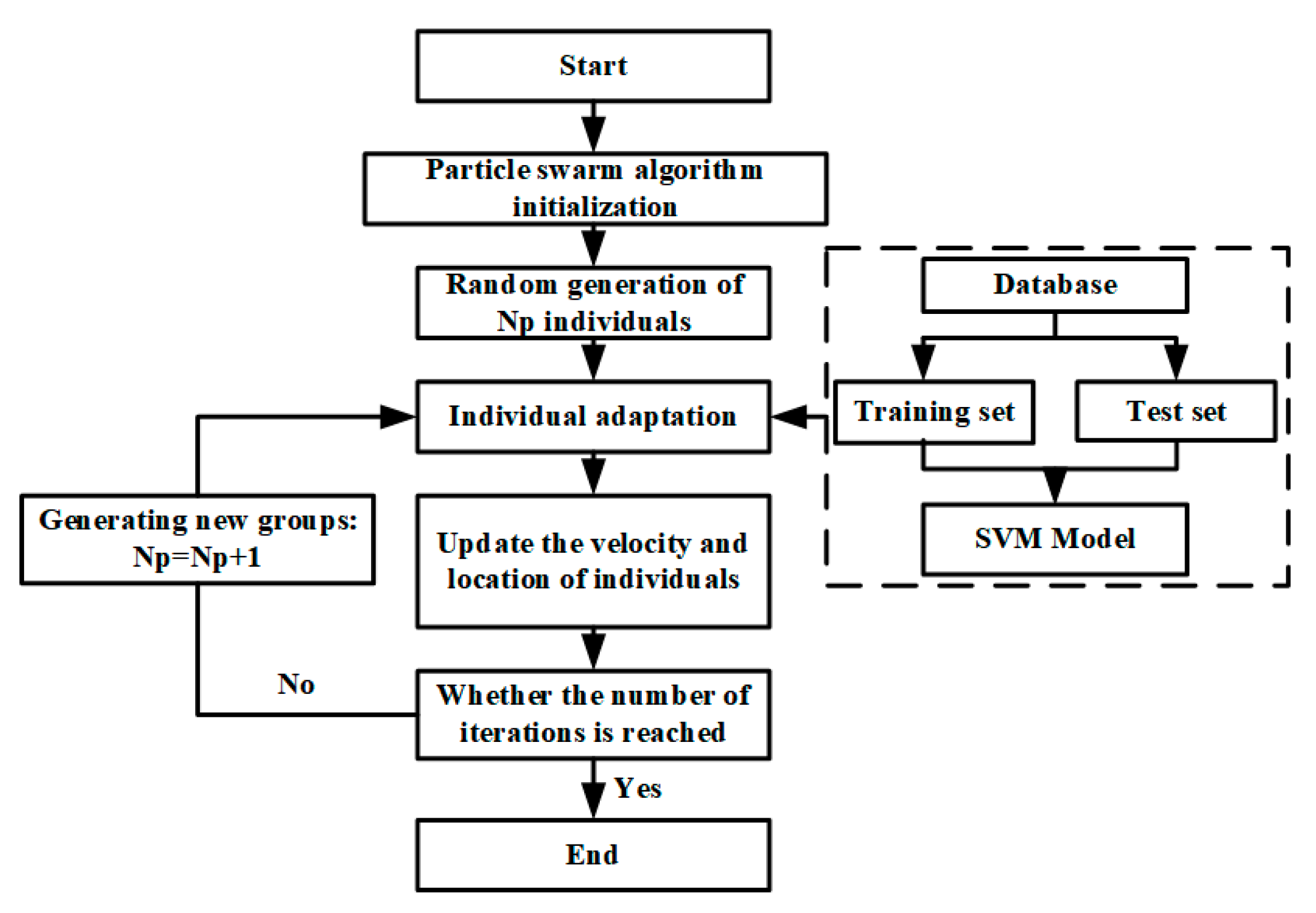
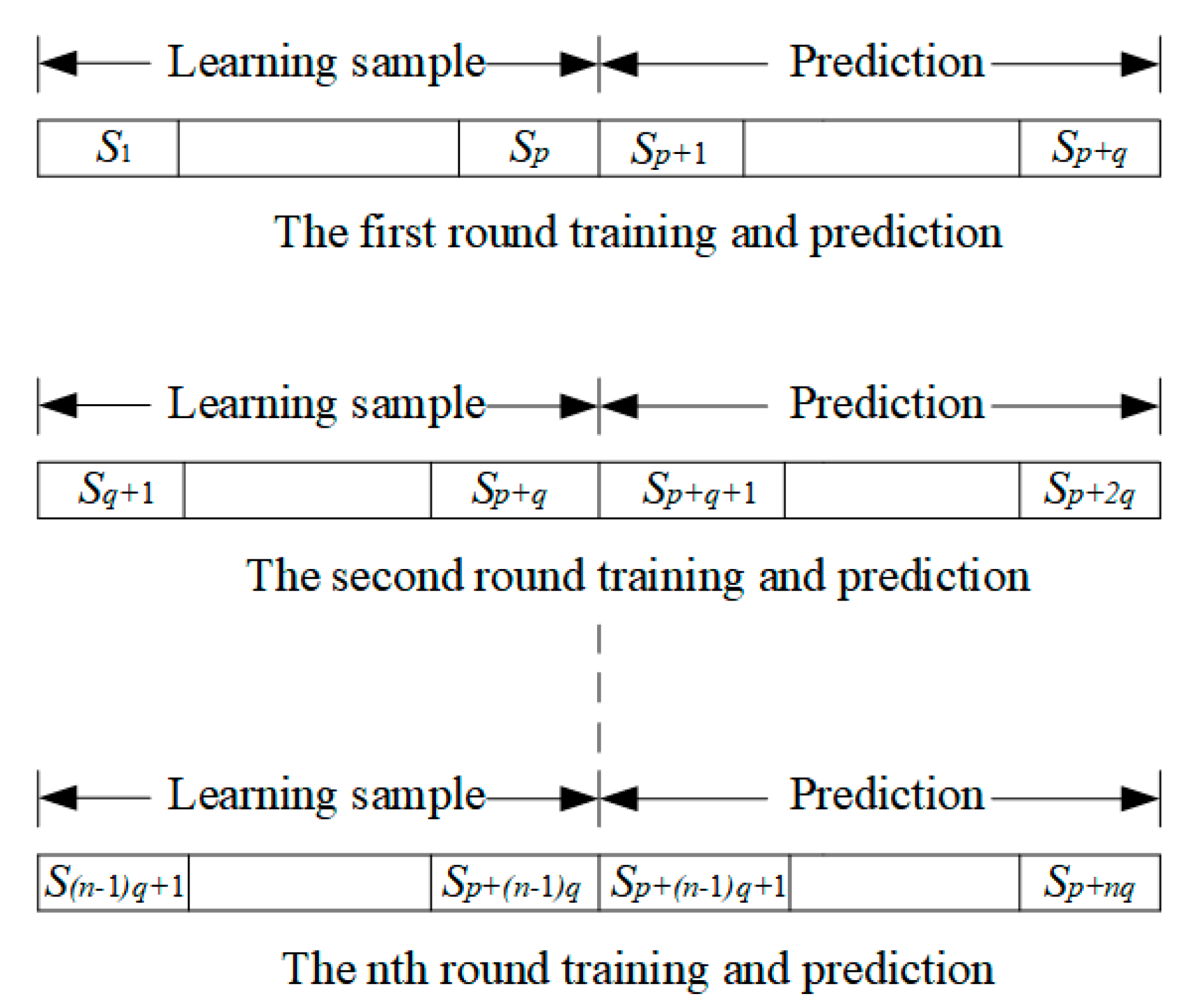
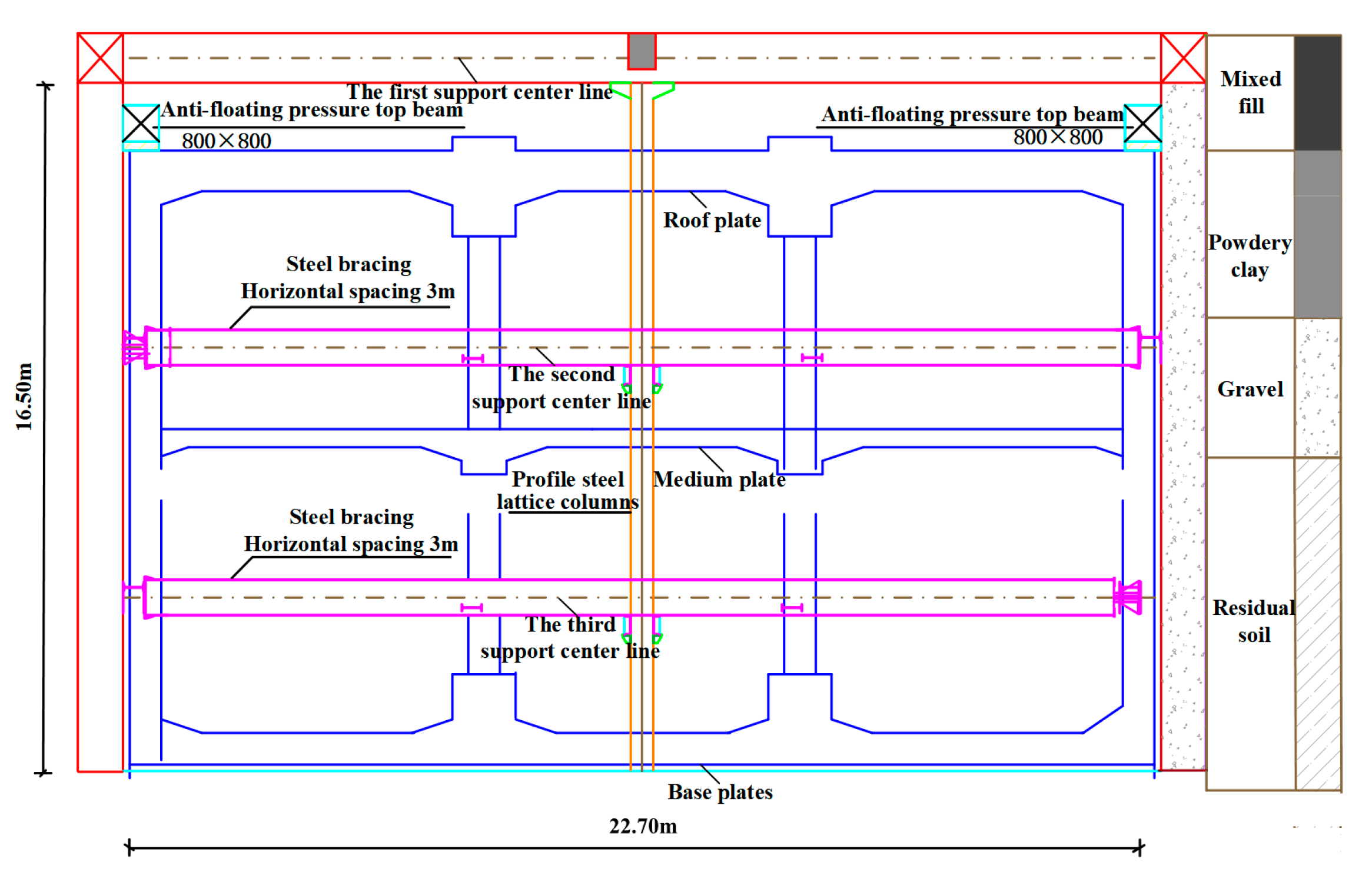
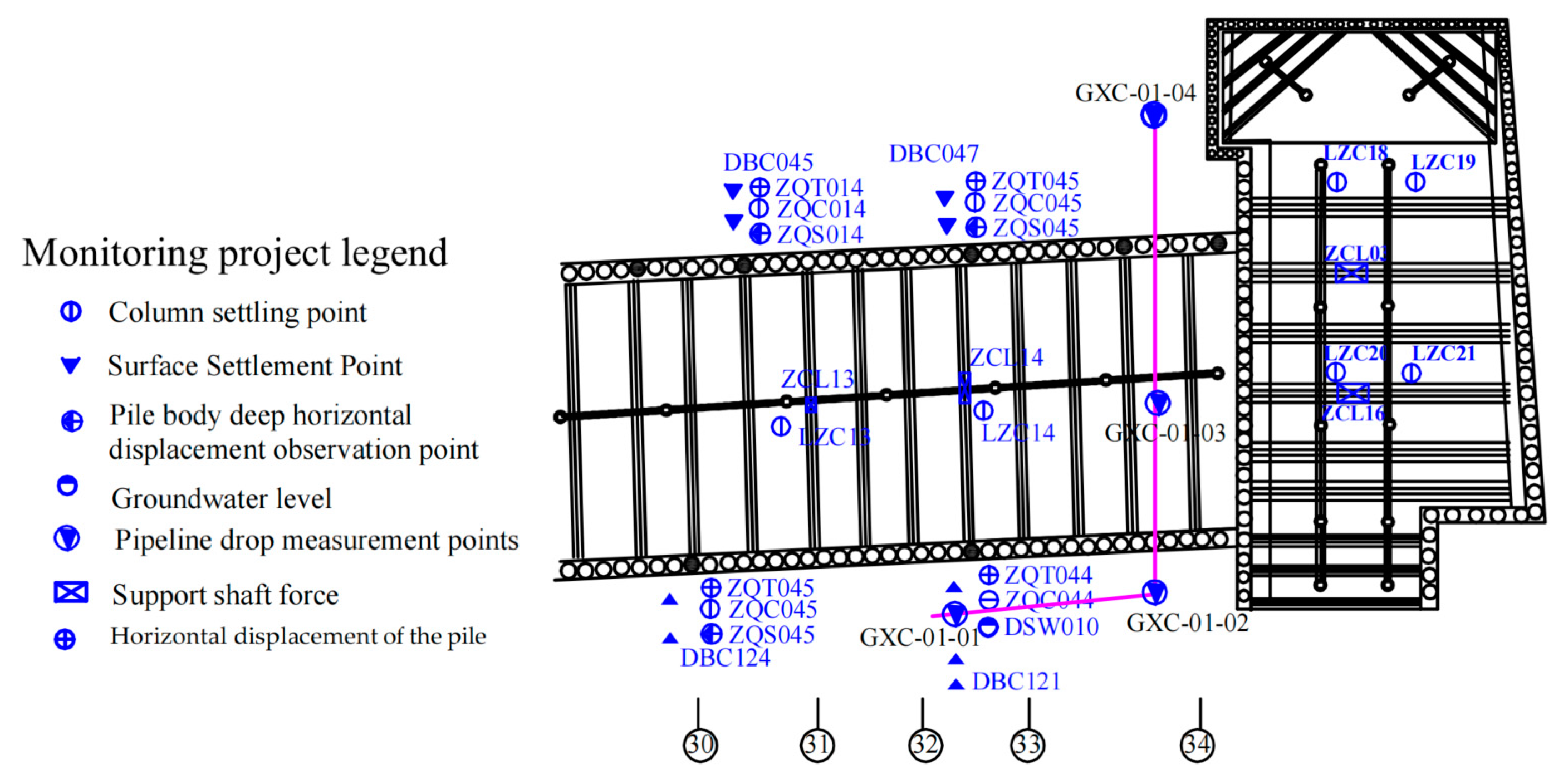
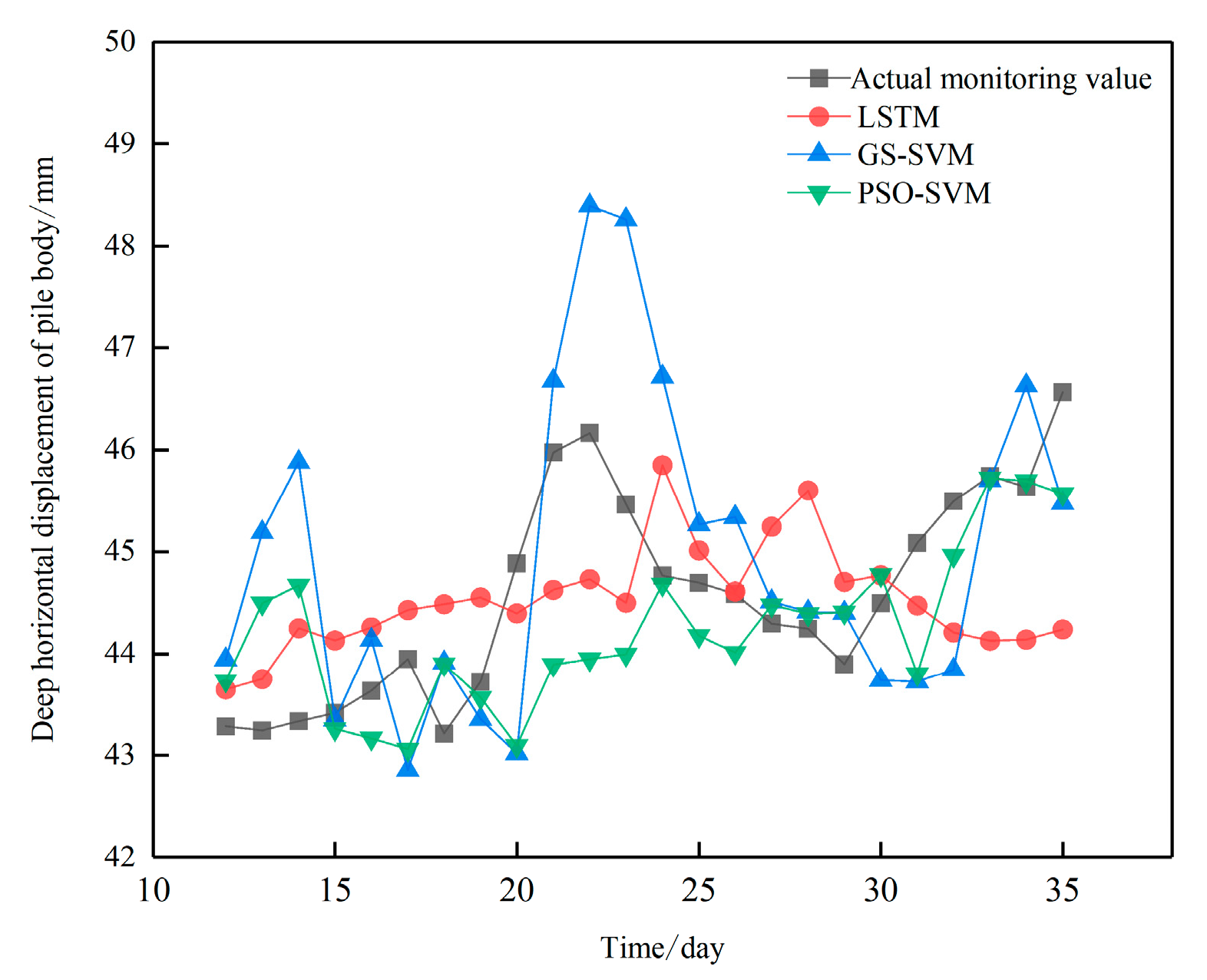
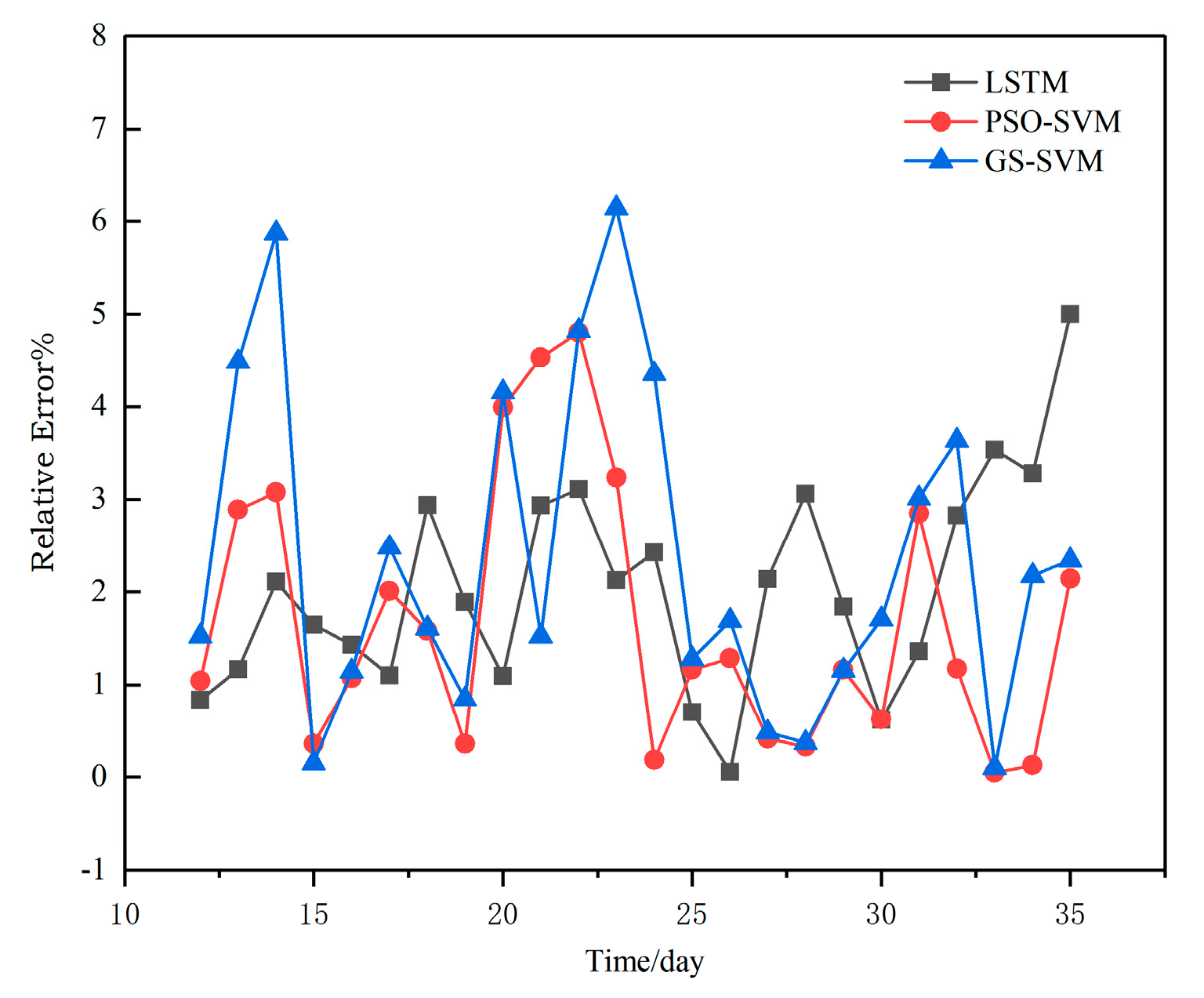
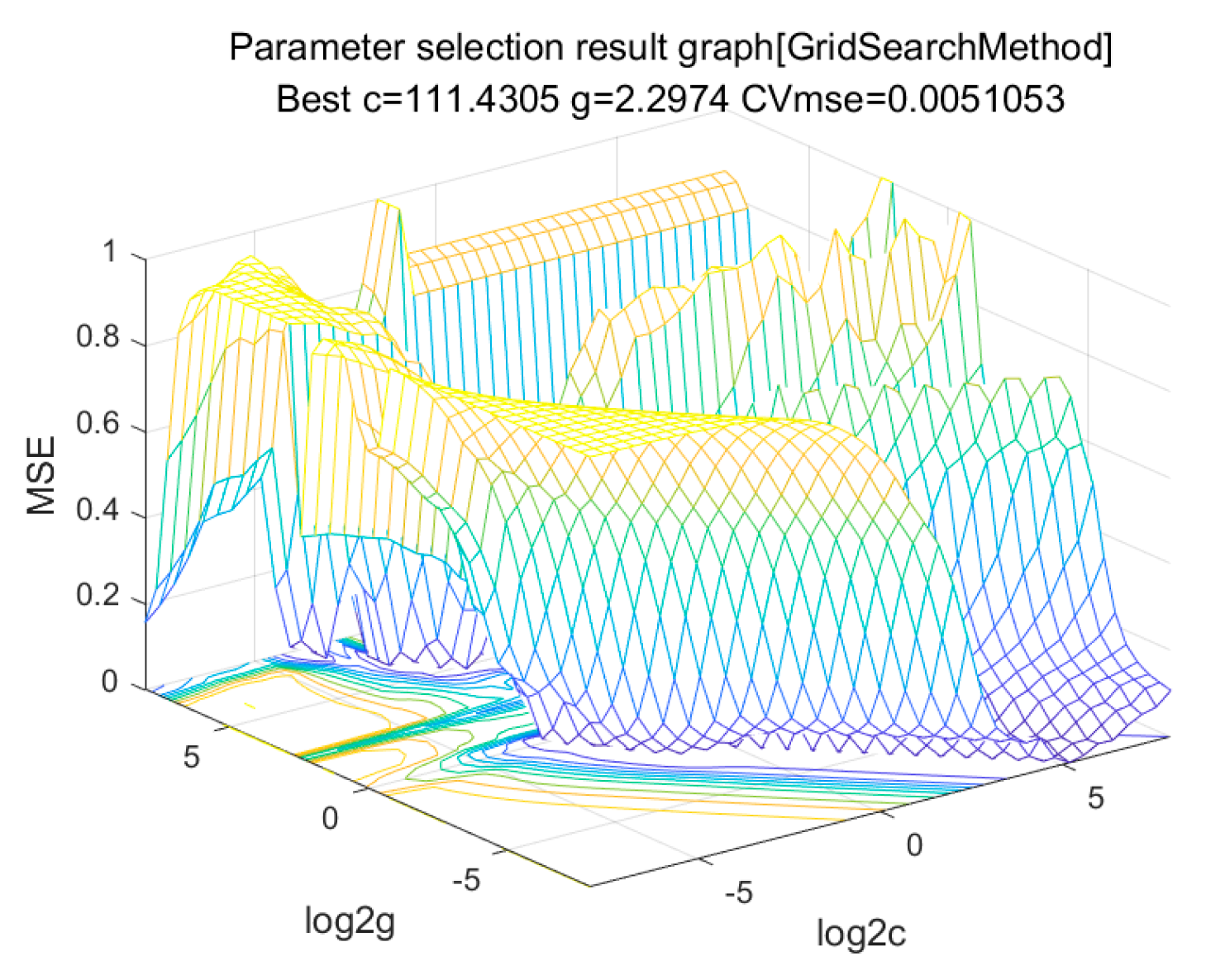
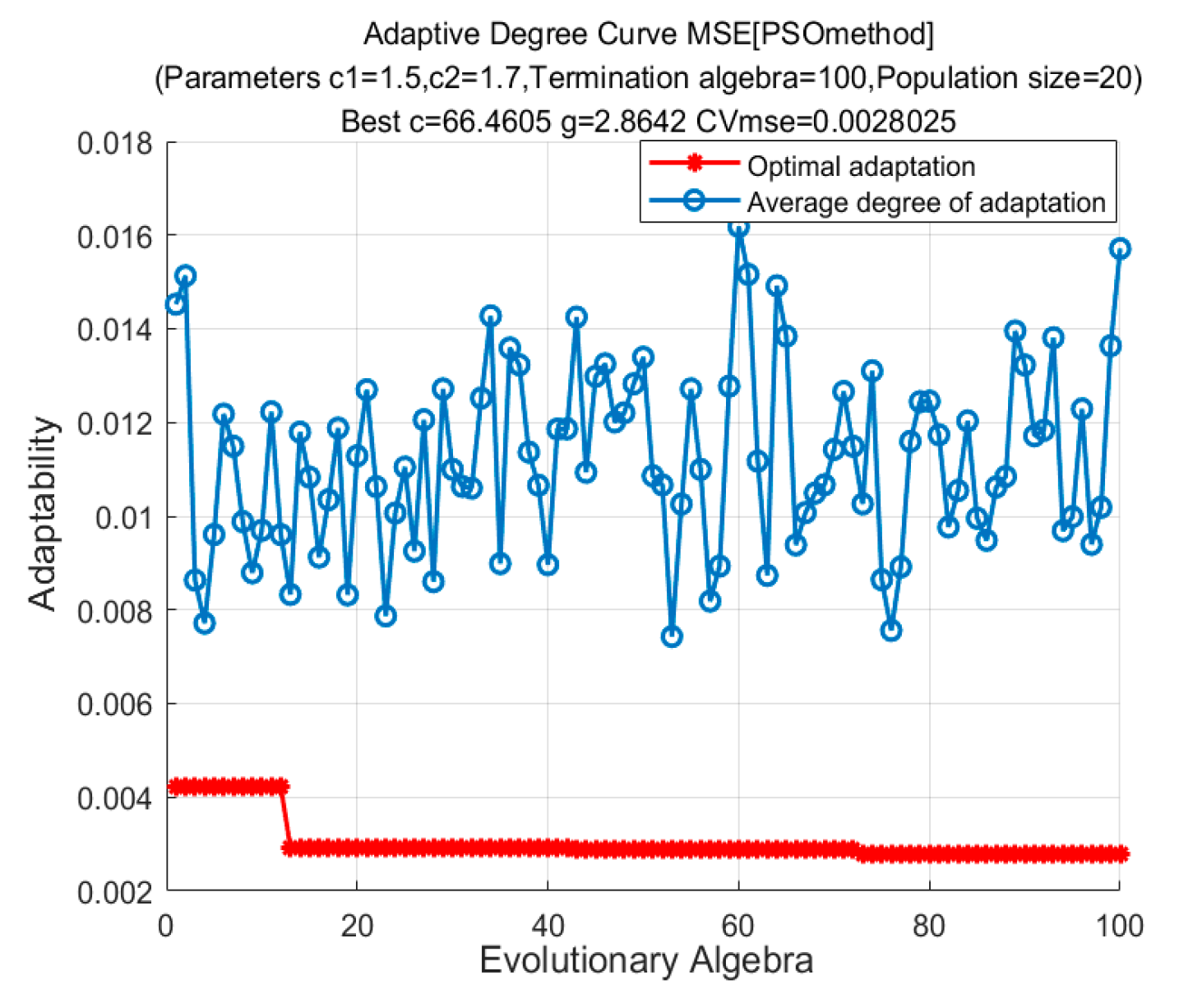
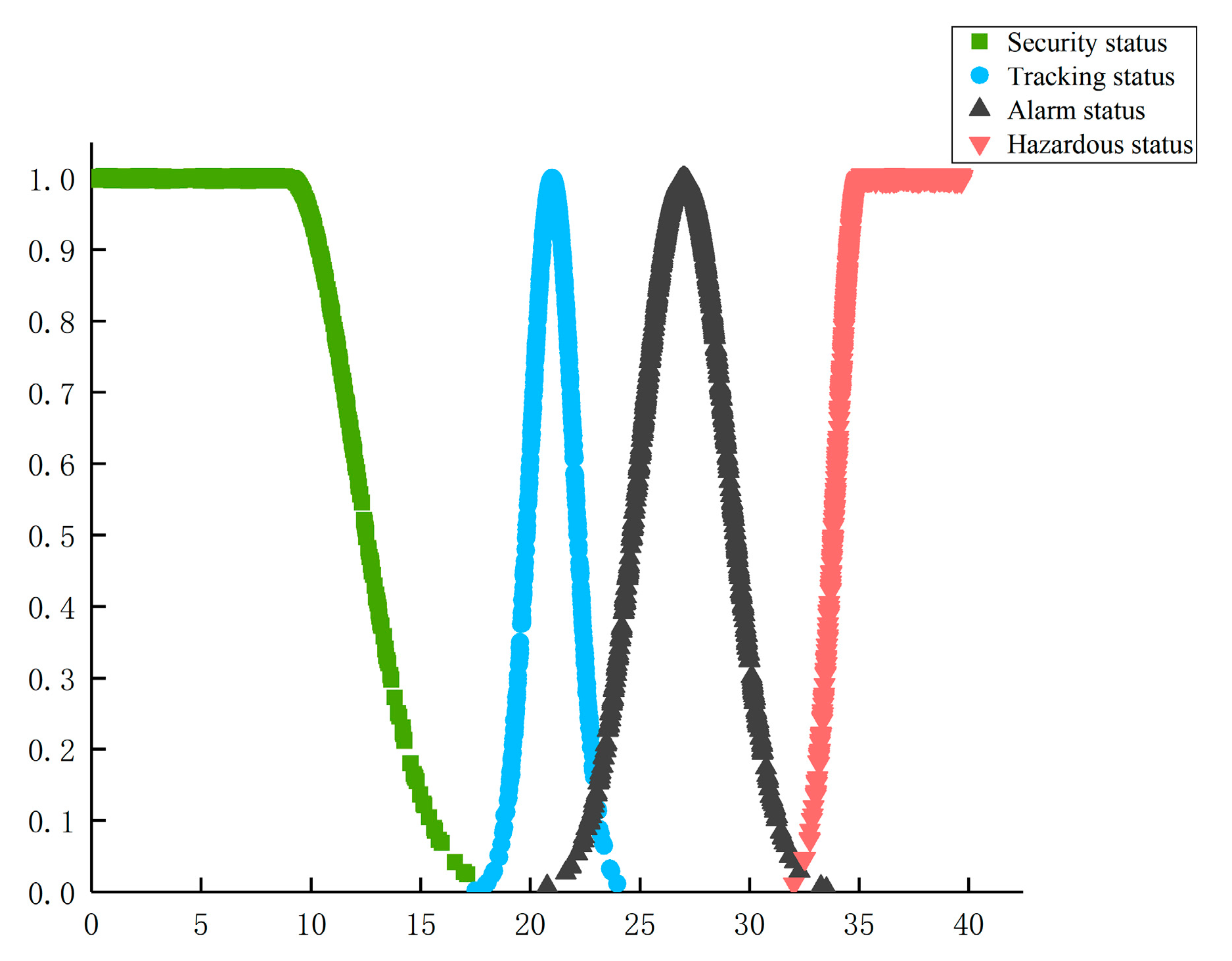

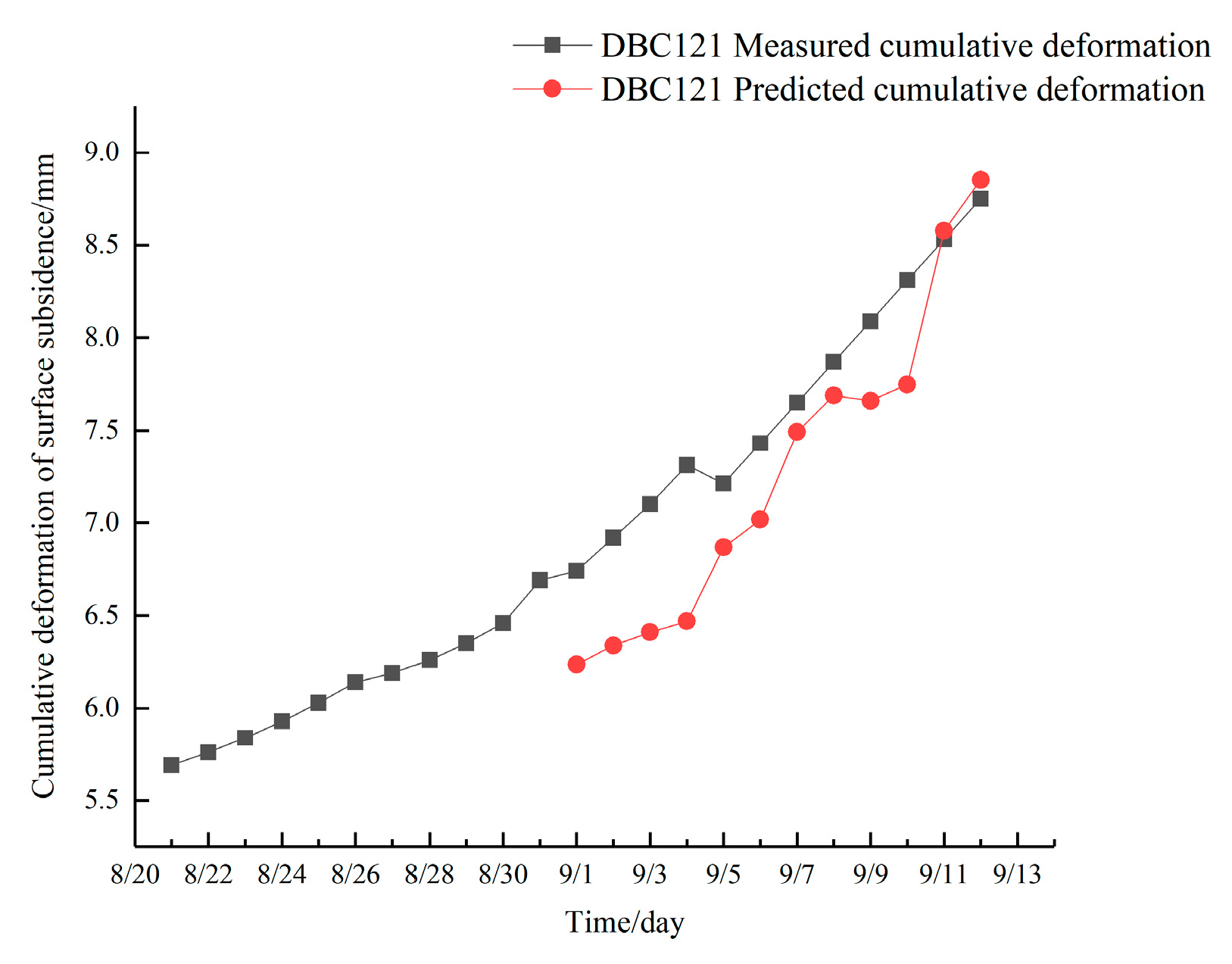
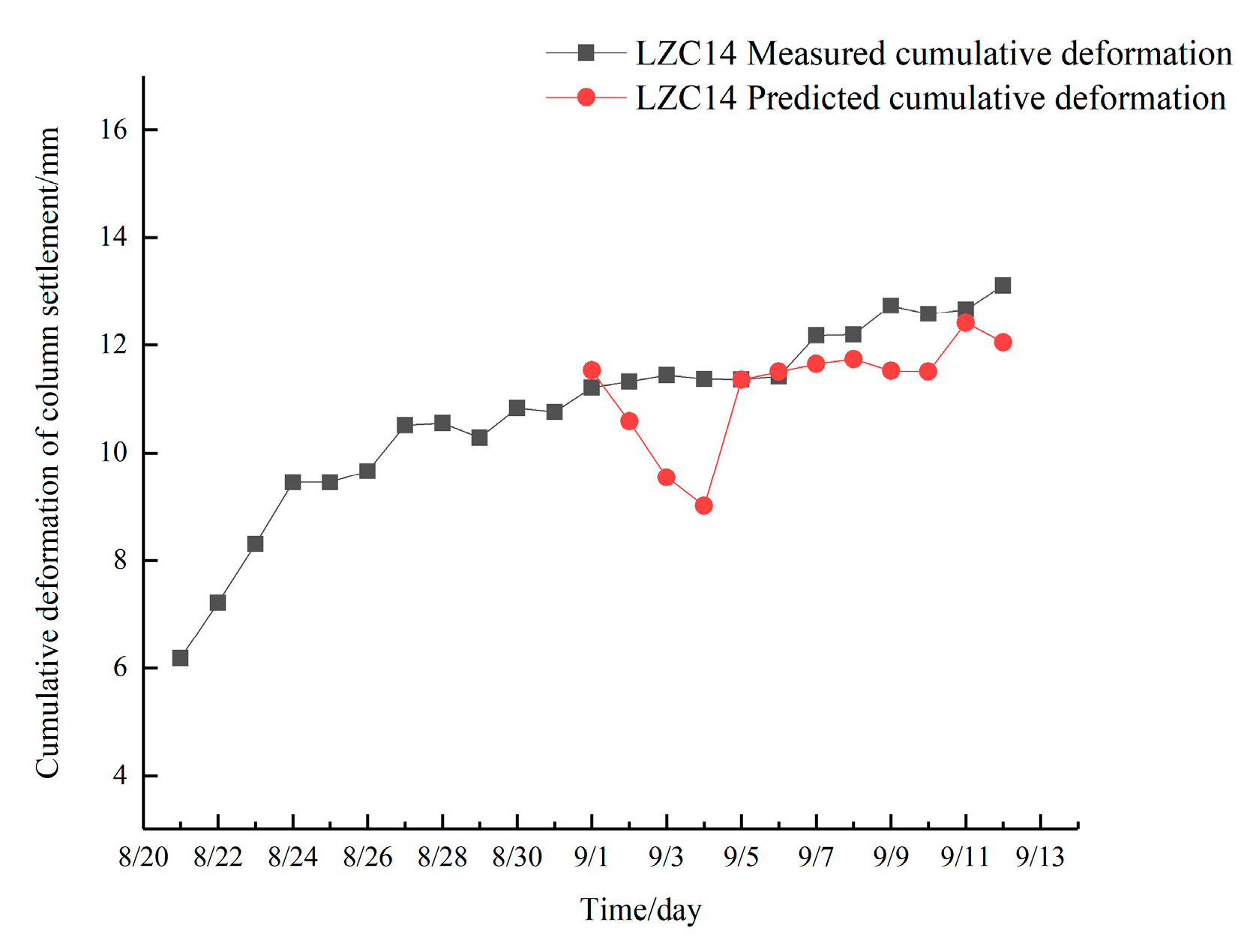
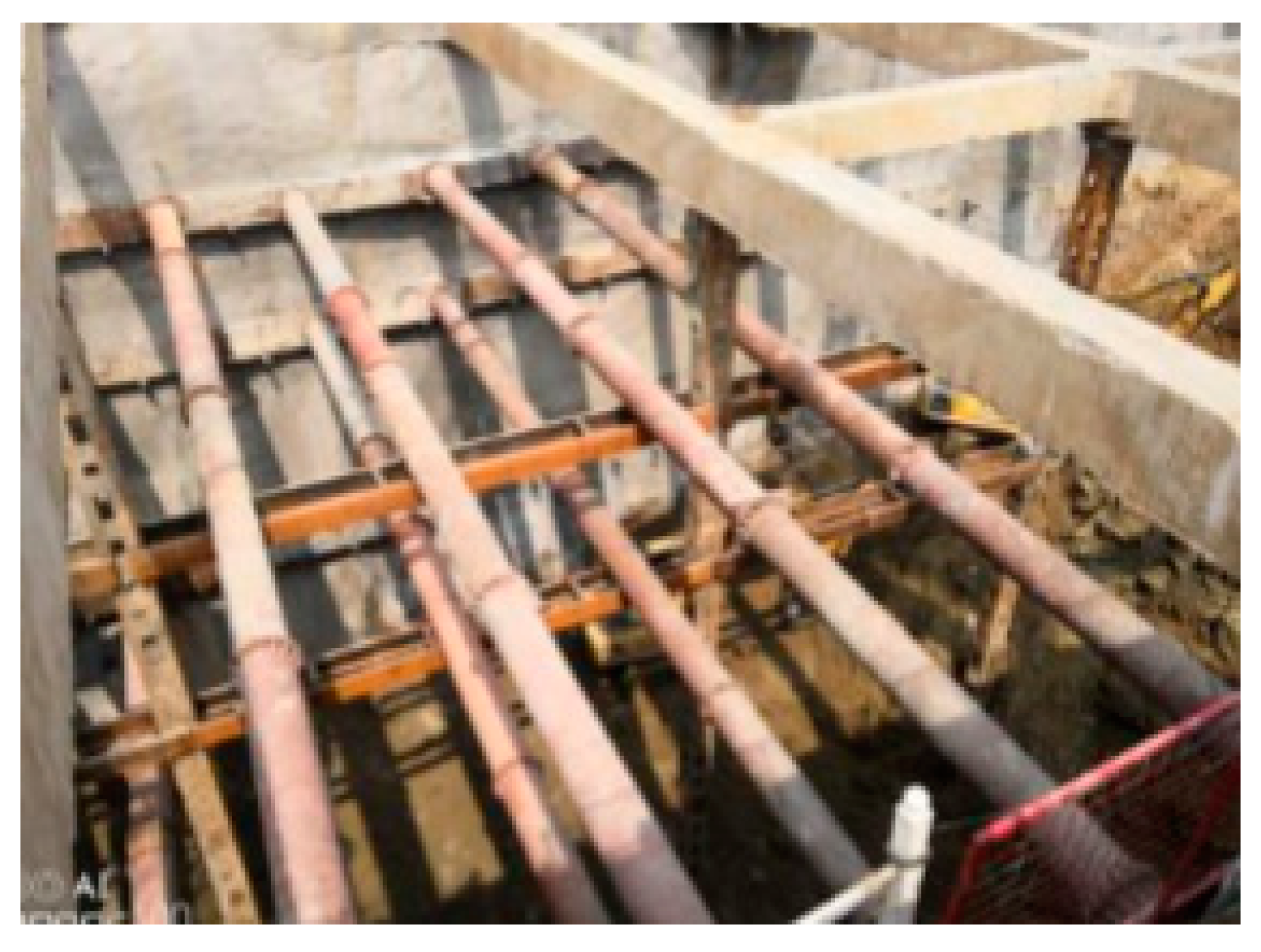
| The Risk Level of Envelope Deformation | Security Status I | Tracking Status II | Alarm Status III | Hazardous Status IV |
|---|---|---|---|---|
| Cumulative variation/control value | ||||
| Change rate/control value |
| Monitoring Projects | Monitoring Indicators | Security Status I | Tracking Status II | Alarm Status III | Hazardous Status IV |
|---|---|---|---|---|---|
| Horizontal displacement of the pile body | Cumulative value (mm) | ||||
| Speed (mm/d) | |||||
| Surface Settlement | Cumulative value (mm) | ||||
| Speed (mm/d) | |||||
| Column Settlement | Cumulative value (mm) | ||||
| Speed (mm/d) |
| Indicators | I | II | III | IV | |||||||||
|---|---|---|---|---|---|---|---|---|---|---|---|---|---|
| Ex | En | He | Ex | En | He | Ex | En | He | Ex | En | He | ||
| Hhorizontal displacement of the pile | Cumulative value | 9 | 3 | 0.01 | 21 | 1 | 0.01 | 27 | 1 | 0.01 | 35 | 1 | 0.01 |
| Deformation rate | 0.5 | 0.2 | 0.01 | 2.1 | 0.1 | 0.01 | 2.7 | 0.1 | 0.01 | 3.5 | 0.1 | 0.01 | |
| Surface Settlement | Cumulative value | 5 | 3 | 0.01 | 15 | 1 | 0.01 | 25 | 1 | 0.01 | 35 | 1 | 0.01 |
| Deformation rate | 0.6 | 0.2 | 0.01 | 1.4 | 0.1 | 0.01 | 1.8 | 0.1 | 0.01 | 2.5 | 0.1 | 0.01 | |
| Column Settlement | Cumulative value | 6 | 2 | 0.01 | 14 | 0.7 | 0.01 | 18 | 0.7 | 0.01 | 22 | 0.7 | 0.01 |
| Deformation rate | 0.9 | 0.3 | 0.01 | 2.1 | 0.1 | 0.01 | 2.7 | 0.1 | 0.01 | 3.5 | 0.1 | 0.01 | |
| Indicators | Monitoring Values | The Risk Level of Envelope Deformation | ||||
|---|---|---|---|---|---|---|
| m (I) | m (II) | m (III) | m (IV) | |||
| Horizontal displacement of the pile | Cumulative value/mm | 26.49 | 0 | 0 | 0.998 | 0 |
| Deformation rate/mm·d−1 | −0.45 | 0 | 0.9027 | 0.009 | 0.092 | |
| Surface Settlement | Cumulative value/mm | 7.74 | 0.658 | 0.34 | 0 | 0 |
| Deformation rate/mm·d−1 | 0.08 | 1 | 0 | 0 | 0 | |
| Column Settlement | Cumulative value/mm | 11.50 | 0.9756 | 0.023 | 0.002 | 0 |
| Deformation rate /mm·d−1 | −0.24 | 0.992 | 0.008 | 0 | 0 | |
| Basic Probability Assignment | m (I) | m (II) | m (III) | m (IV) |
|---|---|---|---|---|
| Horizontal displacement of the pile m (A) | 0 | 0.45 | 0.51 | 0.05 |
| Surface Settlement m (B) | 1 | 0 | 0 | 0 |
| Column Settlement m (c) | 0.99 | 0.01 | 0 | 0 |
| d = [0.2; 0.1; 0.2]; w = [0.2; 0.4; 0.4]; | ||||
| Improved D-S | 0.8 | 0.1 | 0.1 | 0.01 |
| Foundation Pit Grade | I | II | III | IV |
|---|---|---|---|---|
| State of foundation pit | Security | Tracking | Alarm | Hazardous |
Disclaimer/Publisher’s Note: The statements, opinions and data contained in all publications are solely those of the individual author(s) and contributor(s) and not of MDPI and/or the editor(s). MDPI and/or the editor(s) disclaim responsibility for any injury to people or property resulting from any ideas, methods, instructions or products referred to in the content. |
© 2023 by the authors. Licensee MDPI, Basel, Switzerland. This article is an open access article distributed under the terms and conditions of the Creative Commons Attribution (CC BY) license (https://creativecommons.org/licenses/by/4.0/).
Share and Cite
Wu, B.; Wan, Y.; Xu, S.; Zhao, C.; Liu, Y.; Zhang, K. A Multi-Source Intelligent Fusion Assessment Method for Dynamic Construction Risk of Subway Deep Foundation Pit: A Case Study. Sustainability 2023, 15, 10162. https://doi.org/10.3390/su151310162
Wu B, Wan Y, Xu S, Zhao C, Liu Y, Zhang K. A Multi-Source Intelligent Fusion Assessment Method for Dynamic Construction Risk of Subway Deep Foundation Pit: A Case Study. Sustainability. 2023; 15(13):10162. https://doi.org/10.3390/su151310162
Chicago/Turabian StyleWu, Bo, Yajie Wan, Shixiang Xu, Chenxu Zhao, Yi Liu, and Ke Zhang. 2023. "A Multi-Source Intelligent Fusion Assessment Method for Dynamic Construction Risk of Subway Deep Foundation Pit: A Case Study" Sustainability 15, no. 13: 10162. https://doi.org/10.3390/su151310162
APA StyleWu, B., Wan, Y., Xu, S., Zhao, C., Liu, Y., & Zhang, K. (2023). A Multi-Source Intelligent Fusion Assessment Method for Dynamic Construction Risk of Subway Deep Foundation Pit: A Case Study. Sustainability, 15(13), 10162. https://doi.org/10.3390/su151310162








